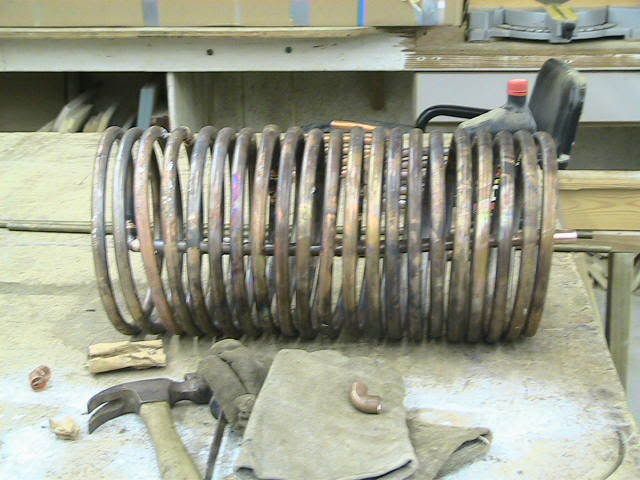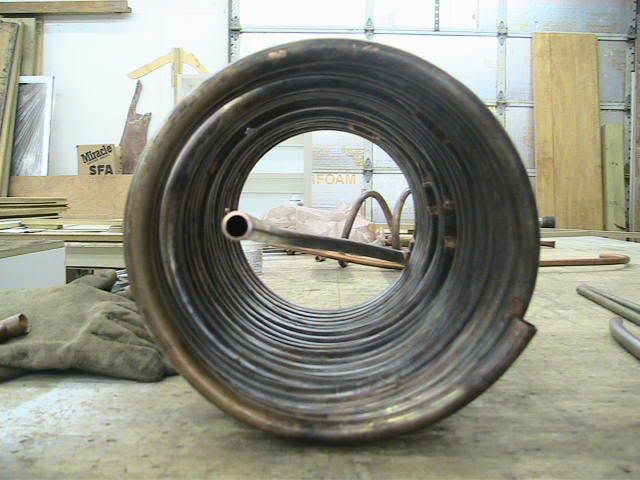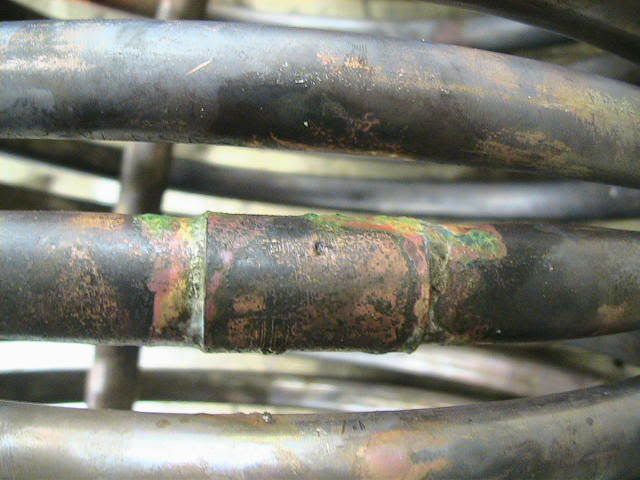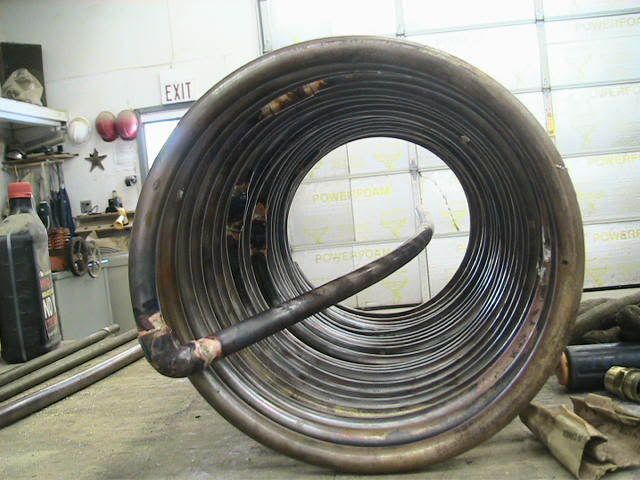I'm late in this thread having joined you all only yesterday.
Seems there has been no activity here since July - did I miss something? Was there a loud bang or hiss out west?
I've been interested in flash steam boilers since I read a book borrowed from the library on Doble Steam Cars about 30+ years ago. Shortly after that, when I was making a good living chemically descaling boilers and other heat exchangers, I was called to a Stone's Generator for descaling. I was delighted to find that I could leave my pumps unused on the truck. I needed to ask the proprietor of the knitwear factory for a look at the manual.
There were two diaphragm pumps in the system, operated by cams from the motor and controlled by electro solenoids which held the diaphragms still when needed. Neither got hot, the valves being at one end of a long-ish pipe and the diaphragm at the other, well away from the circulating steam coil. One pump fed the boiler, the other kept it circulating.
The basic principle is that the water is continuously circulated through the single coil which may be several hundred feet long, thus no steam pockets can develop. These would lead to "dry" areas which would be quickly burned by the fire, rather the fluid is water containing bubbles of steam. Near the top of the coils the fluid escapes into a centrifugal separator which also contains high and low water level sensors. Steam output from the top of this chamber is passed through a small number of coils in the flue in order to dry it and maybe give a little superheat.
In the foregoing I believe it is identical to the Doble's boiler, possibly even depending on Doble's patents.
The Doble car was fired by kerosene through a carburettor and could get 30 miles per US gallon. This was due in no small part to its excellent condensing system. 65% of the used steam was recycled, so its water tank could be quite small and there was no telltale cloud following it like those of the Whites and Stanleys.
The "compact" car that failed to get into production (concocted financial irregularities scuppered it so I believe) was to have a simple uniflow engine, unlike the DA one of the large cars, much as you have mentioned with your B&S engine. A good vacuum in the exhaust here would be a great advantage.
Doble Henschel ran steam locomotives in Germany for some years and the boilers found their way into diesel powered passenger trains for heating.
http://webserve.govst.edu/users/gaskrau/vapor.html
They seem to be more correctly referred to as vapour generators, but I remember being told they were used on board ship to power small auxiliary engines for pumping duties, etc.
To sum up, a flash plant should be an automatic unit with safety built in. Circulation of the water is essential, not just desirable. Overpressure, low (or high) water and over temperature of combustion outlet must ALL shut down the system.
I'm not sure of the use of copper pipe as a material, but probably fine for the circulated fluid. If you ever go the way of superheat those last couple of turns should be steel. After all, they won't suffer much scale.
I wish you well with the project. You have exactly the right attitude. Maybe it's a little on the large side for an experimental rig.
Ray








